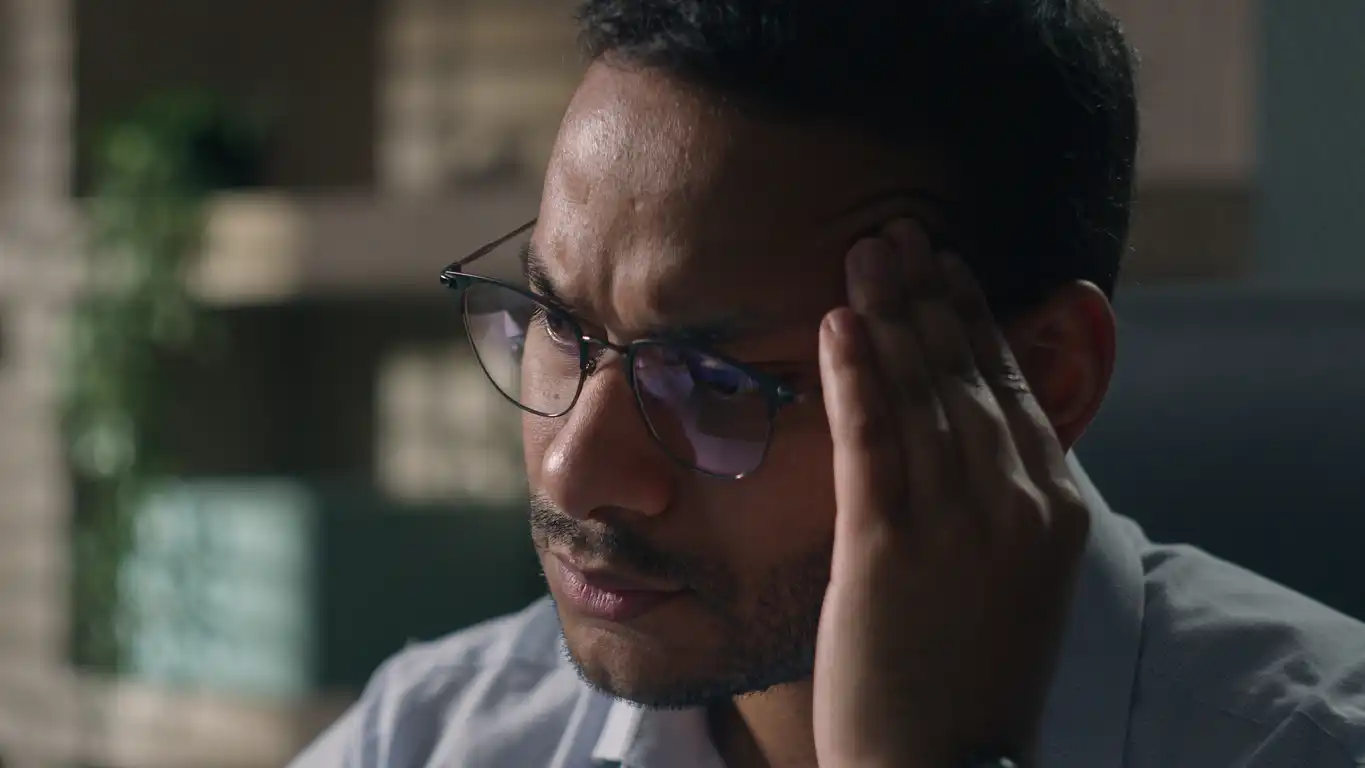Insights from Dr. Lowenstein’s Book Headache Surgery – Understanding a Path Forward
A Silent Epidemic, Misunderstood
Millions of people live under the shadow of chronic headaches and migraines. For many, these headaches are disabling, misunderstood, and—perhaps most frustratingly—misdiagnosed. Traditional treatment paths often emphasize medications, neurological imaging, and psychiatric explanations. But what if, for a large subset of patients, the true origin of the pain lies not in the brain—but in the peripheral nerves?
In fact, many headaches are similar to carpal tunnel syndrome- pressure on a nerve causing pain. What is required is a fresh look at chronic headaches through the lens of nerve compression. In his book, Headache Surgery – Understanding a Path Forward, Dr. Lowenstein draws from his own history with migraines, his surgical experience, the scientific literature, and several patient stories to outline how entrapment of specific nerves in the head and neck can trigger debilitating headaches—and how releasing those nerves through targeted surgery can offer lasting relief.

Redefining the Source of Headache Pain
Most people, including many physicians, associate migraines with neurological dysfunction: blood vessel changes, serotonin imbalances, aura symptoms. While these are valid components in some patients, they are far from the full picture.
Dr. Lowenstein introduces the evidence that many chronic headaches originate from peripheral nerve irritation. These nerves—often the greater occipital, lesser occipital, supraorbital, supratrochlear, zygomaticotemporal, and auriculotemporal—can become compressed by muscles, fascia, or bone, blood vessels or even lymph nodes. This compression causes inflammation and triggers pain signals that radiate into traditional “migraine zones”: behind the eye, across the forehead, into the temples, and down the neck.
Critically, this mechanism doesn’t require a brain-based origin. Rather, the pain is referred from nerve compression in areas far from the central nervous system. The irritation from these nerves sends signals to the brain, causing pain, aura, nausea…. different symptoms in different people.
How Compression Happens—The Anatomy and Mechanics of a Headache
Peripheral nerve compression often begins subtly: a tight muscle, a thickened fascial band, a bone notch that impinges a nerve repeatedly with motion. Over time, this irritation becomes chronic. The nerve develops a lower threshold for pain, becomes inflamed, and starts sending out pain signals with increasing frequency.
Examples include:
The Greater occipital nerve- entrapment at the semispinalis capitis muscle—often misdiagnosed as tension headache or cervicogenic pain.
The Supraorbital nerve- compression at the orbital rim or by the corrugator supercilii muscle—causing deep, stabbing pain behind the eye.The Zygomaticotemporal nerve- irritation in the temple which is frequently described as “vice grip” pain.
These compressions often mimic other headache disorders. Patients receive years of CT scans, MRIs, neurologist visits, and ineffective medications, without ever having the actual compression site evaluated.
A Diagnostic Shift— Nerve Blocks, Not Brain Scans
One of the most transformative clinical tools in nerve decompression diagnosis is the diagnostic nerve block. Rather than relying solely on imaging, Dr. Lowenstein performs precise local anesthetic injections at suspected compression points. If the patient experiences temporary headache relief as most do, this strongly suggests that the compressed nerve is the origin of their pain.
This block-based approach often yields better clarity than MRIs or CTs, especially when dealing with soft tissue entrapment. It’s a key differentiator between traditional neurology and nerve-focused surgical evaluation.
Surgical Treatment—What Is Nerve Decompression Surgery?
Nerve decompression surgery is not a brain operation. It is performed on the soft tissues of the head and neck and is designed to release pressure on the affected peripheral nerves. The goal: eliminate the mechanical irritation causing the pain.
Dr. Lowenstein describes multiple surgical approaches depending on which nerves are involved:
Occipital decompression is performed through a small incision in the back of the scalp, where tight muscles and fascia surrounding the greater and lesser occipital nerves are released. Occasionally, small blood vessels or lymph nodes are also addressed if they are pushing on the nerves.
Forehead nerve decompression removes or repositions the corrugator supercilii muscles that compress the supraorbital and supratrochlear nerves. If Botox is helping your headaches, forehead nerve decompression is very likely to provide headache relief. If Botox is not helping you, then the bone of the brow may be tight around the nerve, and release here often alleviates headaches permanently.
Temporal decompression involves management of the zygomaticotemporal and/or auriculotemporal nerve to remove the vice grip of headache pain.
These surgeries are typically outpatient procedures with relatively quick recovery times despite life-changing impact. Patients who are candidates for surgery achieve significant relief over 90% of the time.
Success Rates and Outcomes
One of the most striking aspects of Dr. Lowenstein’s practice is the surgical success rate. Over 90% of his patients report improvement in frequency, intensity, and duration of headaches. A significant portion—roughly half of those patients —experience complete resolution of symptoms.
These statistics significantly exceed those of any pharmacologic migraine prevention therapies, and the results are usually permanent. No daily pills, no ongoing Botox, no dependency on abortive medications.
Even more powerful than the numbers are the stories: Patients who went from being bedridden 20 days a month to fully employing their lives. Mothers who could not tolerate sound or light now attending their children’s soccer games. College students finishing degrees, entrepreneurs rebuilding their lives.
These transformations are at the heart of Dr. Lowenstein’s mission.

The Battle with Skepticism—Why Don’t More People Know About This?
Dr. Lowenstein acknowledges a frustrating truth: Most neurologists are not trained to recognize or evaluate peripheral nerve compression. Their specialty lies in categorizing symptoms into diagnoses and recommending medications that are incomplete in their effectiveness and often have disturbing side effects. Consequently, nerve decompression is often seen as fringe—even though it has been studied in peer-reviewed surgical literature for over two decades.
When medical modalities, work, things are great. But for the significant number of patients who still suffer with headache pain despite neurology care, another option needs to be presented.
Another challenge is mislabeling. Patients are told they have “atypical migraines,” “refractory headaches,” or “psychosomatic symptoms” when their nerve compression doesn’t show up on scans. In reality, the nerves themselves are rarely visualized with imaging, but the problem is very real.
Dr. Lowenstein’s book, along with his website and patient education videos, aims to change this narrative by empowering patients with information that their doctors may not have.
Who Is a Candidate for Surgery?
Nerve decompression is not for everyone. Ideal candidates typically:
* Have experienced chronic headaches for over a year
* Have failed conservative treatments
* Experience relief with nerve blocks
Importantly, patients do not need to meet the formal criteria for “migraine” as defined by the International Headache Society. In fact, Dr. Lowenstein has had significant success in patients labeled with cluster headaches, occipital neuralgia, or undifferentiated chronic daily headache.
You’re Not Out of Options for Headache Relief—You Just Haven’t Heard All of Them Yet
Dr. Lowenstein’s central message is simple but revolutionary: Chronic headaches are often not brain-based. If you suffer from frequent, disabling head pain that hasn’t responded to standard treatments, nerve compression may be the missing link.
Through diagnostic blocks and targeted surgical release, many patients experience dramatic improvement—even full resolution—of symptoms once thought untreatable. You are not out of options.
If you’re searching for a lasting solution beyond medication, migraine surgery may offer the breakthrough you’ve been waiting for. By addressing the physical cause of pain through nerve decompression, this surgical approach has helped thousands regain control of their lives. Learn more about whether you’re a candidate for migraine surgery at www.headachesurgery.com.
If you’d like to explore whether nerve decompression surgery might help your headaches, contact Dr. Lowenstein’s office or visit www.headachesurgery.com to learn more.

